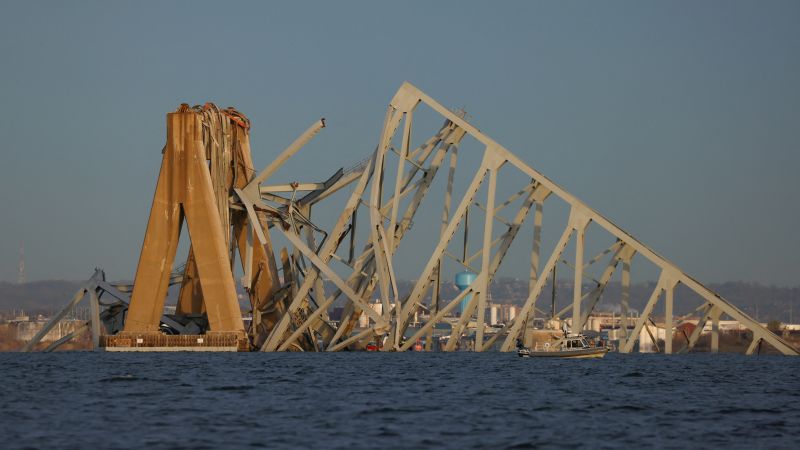Demolition workers are working to clear debris from the Francis Scott Key Bridge in the Port of Baltimore, which was damaged by a container ship, to reopen the channel for ships to move through. Removal of debris between the two bridge pillars will allow large cargo and passenger ships to access the necessary 50-foot depth in the Patapsco River. A heavy lift crane vessel will be on-site at the port to assist with the demolition, but other equipment and contracts are needed before work can begin. The first task will be removing bridge remains from the ship’s bow and then getting the ship itself removed without sinking.
Challenges in removing the debris include pipelines near the bridge, such as a large water line and natural gas line that traverse the river bottom near the former bridge location. These lines run under power lines that are about 200 feet from the former bridge deck, making demolition work more complicated. The reopening of the channel depends on various factors that experts are still assessing, including the expertise of the firms conducting the demolition.
The Port of Baltimore supports thousands of direct and indirect jobs, including 15,330 direct jobs and 139,180 jobs in related services. It is the largest destination for ocean shipments of cars and trucks and the ninth-largest cargo port in the United States. However, no ships can call on the port until the channel is reopened, impacting both job security and income for workers. President Joe Biden has expressed that reopening the port is a priority to protect jobs and support workers affected by the closure.
The delay in reopening the channel has also caused financial losses for ships stuck in the port that are unable to leave. Currently, there are three bulk carriers, one vehicle carrier, two general cargo ships, one oil/chemical tanker, and three logistics naval vessels waiting in the port due to the closure. The timeline for reopening the channel will depend on the progress of the demolition work and the ability of the firms hired to efficiently clear the debris and enable ships to resume normal operations in the Port of Baltimore.


